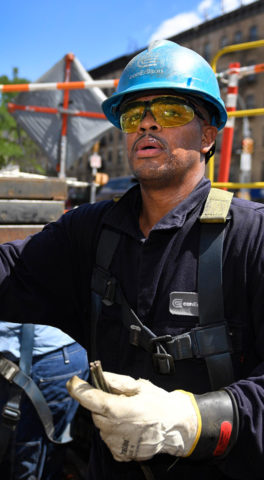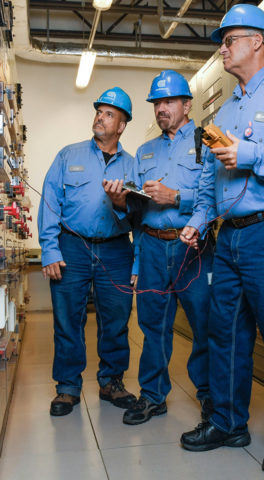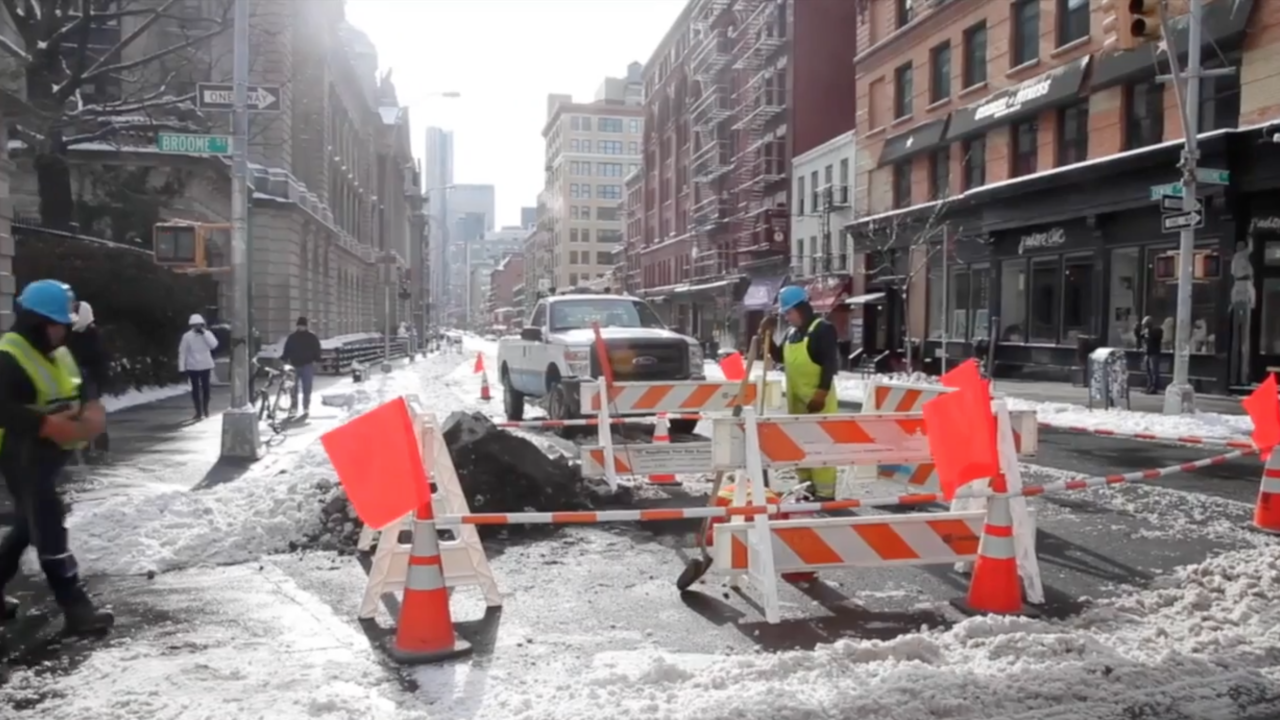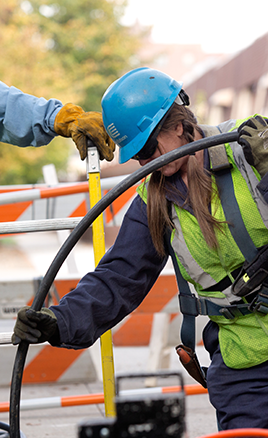
Operational Excellence
Core System Upgrades
Installation of smart meters as part of the company’s Advanced Metering Infrastructure (AMI) began in June. An AMI Operations Center monitors our AMI infrastructure. Installation of our advanced communication networks on Staten Island and in Rockland and Westchester Counties has been ahead of schedule this year. We started the installation of smart meters on the Brooklyn network three months ahead of schedule and are planning to complete the installation of almost half of the Brooklyn network in 2017.
Con Edison’s new website and digital customer experience use smart-meter data to give customers more control over their energy usage. New technology in households, including methane and carbon-monoxide detectors, will continue to improve public safety. Our system provides two-way communication that improves integration of existing sites and control of underground network protector switches.
A smarter grid allows us to operate more efficiently and reduce greenhouse gas emissions by making it easier to integrate renewable energy sources into the grid. Improved system operation and outage management will lead to fewer trucks in the field, further reducing greenhouse gas emissions. By adjusting the voltage on the grid through Conservation Voltage Optimization, we anticipate the AMI system will save $40 million a year in fuel costs. By 2022, we’ll have nearly 5 million smart meters in service through an installation plan that ramps up to approximately 5,000 meters a day along with a new wireless communication platform.
CECONY also invested $1.5 billion in 2017 to fortify its electric delivery systems during the summer. Upgrades and improvements included installations of 18 network transformers and 140 overhead transformers. That equipment can transmit electricity to power about 5,600 homes or 3.7 million iPhones.
Transmission Pipe Enhancement

Our underground transmission system consists of 660 miles of 69, 138, and 345 kilovolt feeders encased in steel pipe surrounded by high-pressure dielectric fluid (a non-toxic mineral oil). Approximately nine million gallons of dielectric fluid circulate through the system to cool and insulate our feeders. The fluid moves through cooling plants at nominal pressures of 200 pounds per square inch. The conductors inside our steel pipes are wrapped in paper insulation.
We are investing $97 million by 2019 to accelerate the refurbishment of 7,500 trench feet per year of leak-prone pipes. We refurbished approximately 6,744 trench feet of piping in 2016. We are investing $5 million in spill cleanups to improve the environment. We’re also investing in research and development that can replace existing feeders with solid dielectric cable that can be cooled with water or air instead of oil.
Our leak-detection system is one of the most sophisticated in the world:
- We use online monitoring to check the integrity of our system
- We infuse our oil with a special tracer gas to help us locate leaks
- If significant leaks occur, we remove feeders from service to allow them to be placed on reduced pressure to slow the leak rate, and
- We use full-time patrols to find and repair leaks
To repair leaks, we excavate to uncover the feeder pipes and apply a mechanical clamp to stop the flow. Permanent repairs are complete when a concentric steel barrel is wielded over the clamp and the pipe. To reduce leaks from our transmission feeders, we accelerate repairs to the coating on our pipes.
Reliability Performance

The standards for measuring the reliability of distribution service are the System Average Interruption Frequency Index (SAIFI) and the Customer Average Interruption Duration Index (CAIDI). SAIFI is compiled annually, and the figure represents the number of service interruptions divided by the number of customers served. CAIDI is also compiled annually; it represents the average time to restore service to interrupted customers. The CAIDI figure results from the total customer minutes of interruption divided by the total number of customers affected. For both figures, a low number indicates a better performance.
2016 NUMBERS FOR CECONY (electric)
SAIFI: 0.126
CAIDI: 149.4 minutes
2016 NUMBERS FOR O&R (electric)
SAIFI: 1.056
CAIDI: 101.9 minutes

Gas Main Replacement

In 2016, CECONY replaced over 79 miles of cast-iron and unprotected steel pipe. This replacement rate is the highest ever recorded by our company in a single year. It also meets the 4 percent replacement rate that we targeted in accordance with the EPA’s Methane Challenge. The miles of replaced pipes exceed our company’s commitment to the New York State Public Service Commission by more than five miles.
Replacement of cast iron and unprotected steel pipe with modern plastic mains or protected steel mains prevented a leakage of 12.8 million of cubic feet of natural gas annually. Methane, the primary element in natural gas, is a major greenhouse gas. Preventing this amount of methane leakage is equivalent to the greenhouse gas emissions associated with driving a vehicle approximately 1,700 miles.
O&R invested approximately $45 million in its gas infrastructure. It replaced 24 miles of leak-prone pipes, and eliminated all cast-iron pipes in Rockland County.
